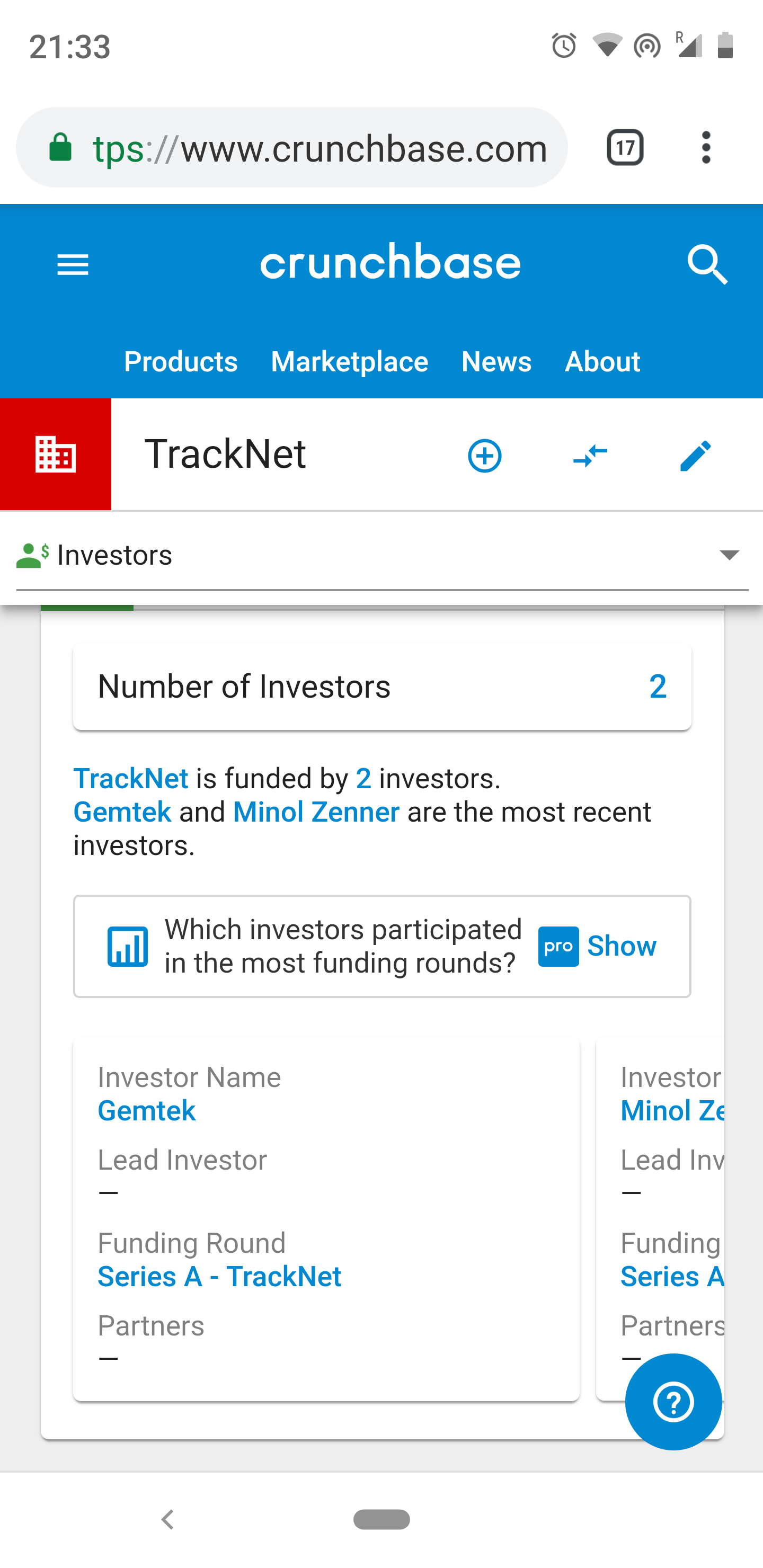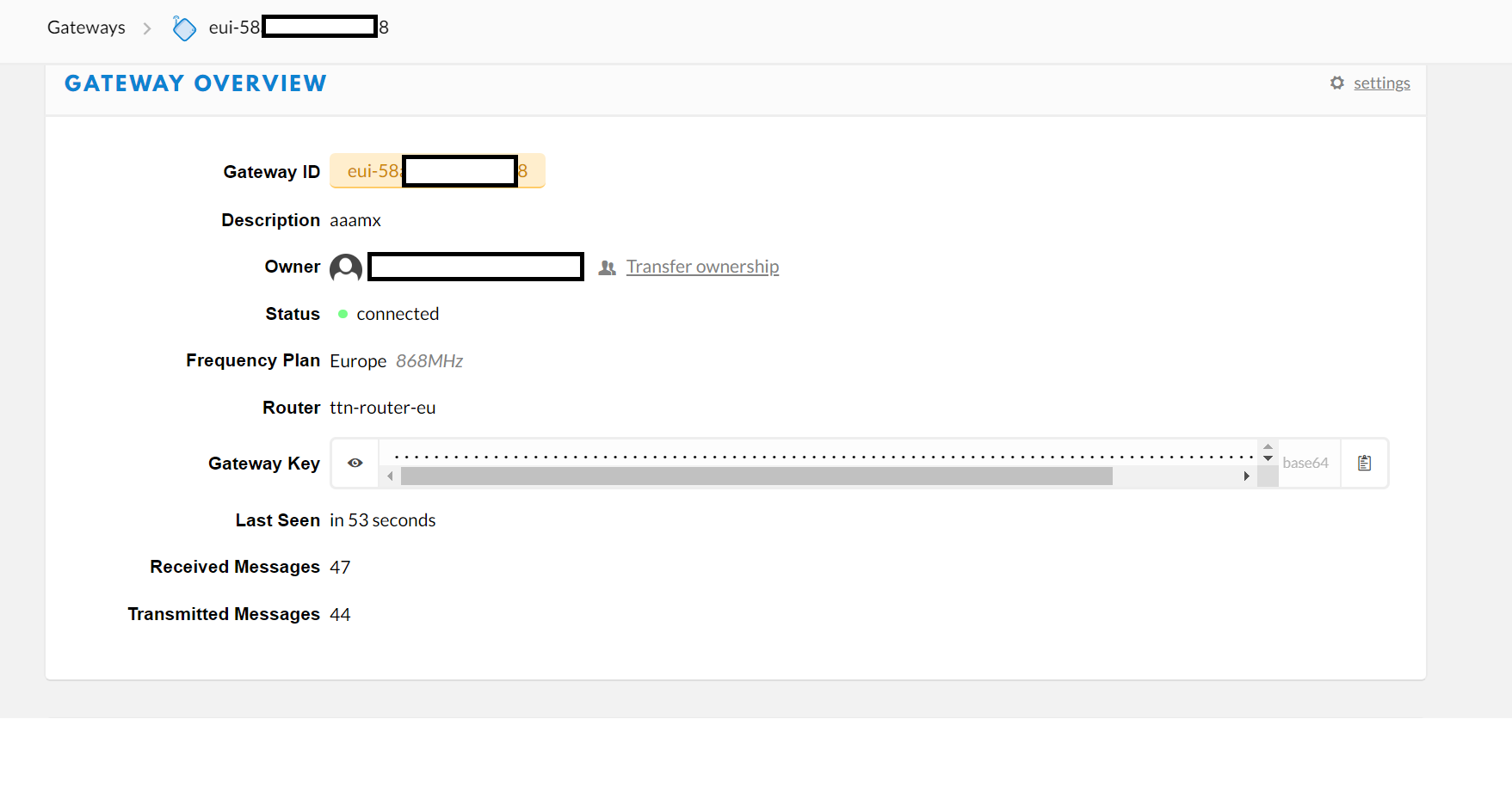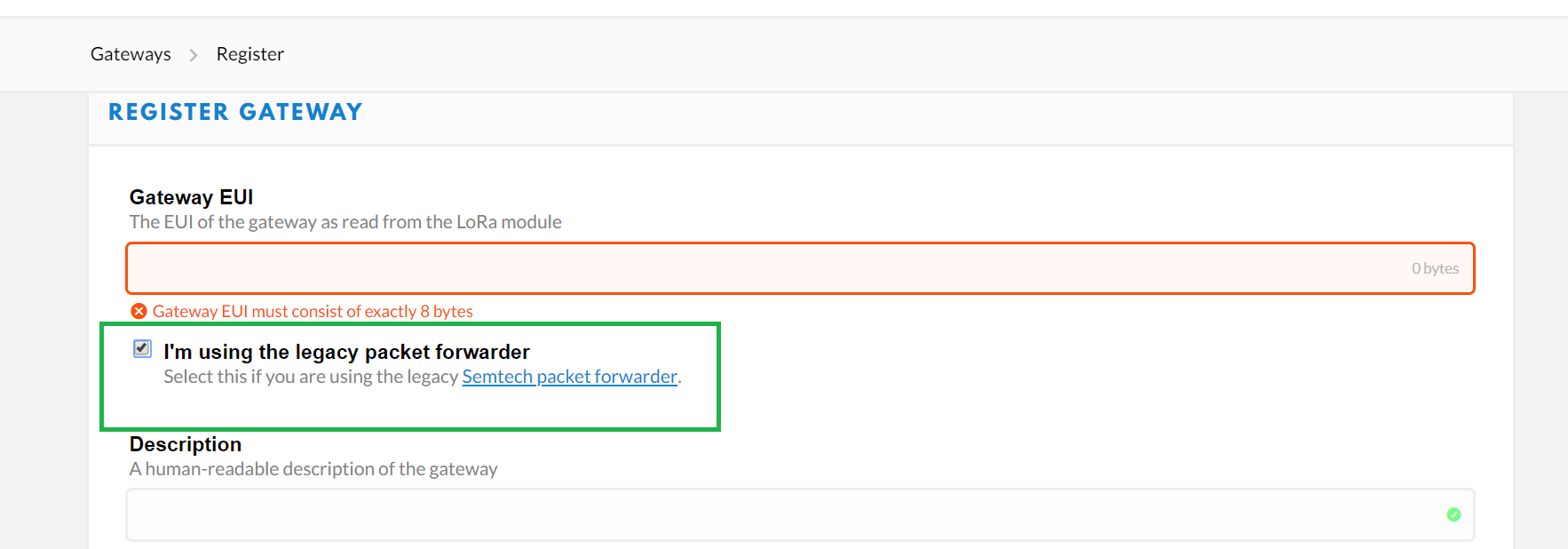Using the information from this thread worked fine for me and my gateway is up and running. Why put documentation in the package for us geeks? Nobody would read it anyway. 
Do you see data or registration in console? gateway console shows all gateways disconnected.
Im stuck at “fetching gateways”
I can’t see it connected, I have the idea there is something not right in how I set it up. But also fetching gateways is taking a long time at the moment.
Maybe someone can post a screenshot of the filled in info in TTN Console
okay this seems the background: Tabs is Trackio GmbH and main investors are GemTek and Zenner.

I was talking to a few of the guys at the conference from both TTI and Semtech, and I gotta say, the way they managed to get the BasicStation packet forwarder on the device in such a short space of time is damn impressive.
From what I hear, it was so last minute that they haven’t even had time to implement the protocol on the server side. Semtech gave them the reference documentation not long before it went public. It shouldn’t be too long until they get it working as BasicStation includes a “translation layer” between the old UDP and new websocket protocol that makes it easy to put something temporary in place.
I’ll wait a week or so before turning my gateway on, patience is a virtue 
@pe1mew, mine shows up as ‘connected’ in the console but I don’t see any traffic running. My regular gateway shows plenty of traffic. Even if I fire up a node here on my desk right under the ‘nose’ of the indoor gateway, it doesn’t show in the TTN console…
Was founded & staffed by some key/experienced Semtech & IBM folks who used Gemtek as ODM and secured these investments. It was (low key) absorbed back into Semtech over the Summer, being slowly wound down & key elements licensed out as we can now see… 
What is the right spelling off the Gateway ID from the mac adress

I tried severall ways with no succes
May allso a screenshot off the device registration
Ok, but for those of us not at the conference: when will it be available? RS Components does not list it yet. Thanks.
Geez,
This has blown up. Thanks for the discussion guys.
Would someone be able to tell me what the processor is in this gateway? I thought you needed a bit of performance for a gateway like a Raspberry Pi, but I may be mistaken considering such performance wouldn’t be available at this price point.
The internal PCB antenna is connected via a U.FL antenna connector. So technically it should be possible to connect an external antenna to it. But better see how it performs with the built-in antenna.
(It was designed as an indoor gateway.)
This is a normal 8-channel gateway, running Semtech’s latest ‘gateway client’ (packet forwarder).
It does not run a Linux(-like) operating system and does not have have enough power to run other processes in addition (it has a limited amount of 50 kB RAM).
No, you only need low latency SPI to read from the concentrator chip, for example the reference pico gateway design uses STM32F401CDU6 ARM Cortex M4
On Linux having a bit more horsepower was the simplest solution to achieve this low latency…
Then of course you need to add whatever complexity of your IP communications. So you won’t run a VPN on this gateway for example…
As already stated the MCU is an ESP8266
Yes, surprising! ![]()
(But also surprising that they did not select the ESP32 instead which is more powerful, more flexible and costs only slightly more.)
Hi. You can find this once setup in CONF mode. Just scroll down in the 192.168.4.1 page.
When you type it in the TTN Console, make sure you use no caps.

it does work. it took a while

I’ve got my GW hooked up nicely. Big thanks to all those who worked hard to make the new GW.
Just an ESP8266! I thought that was for just the Wi-Fi. The Pi must be overkill then?
Also, the gateway must have a LoRaWAN module as well. What is this? An SX1301 or the like is too expensive for the price.
pico-gw so sx1308 - reduce operating temp range etc. lower cost/selling price device.